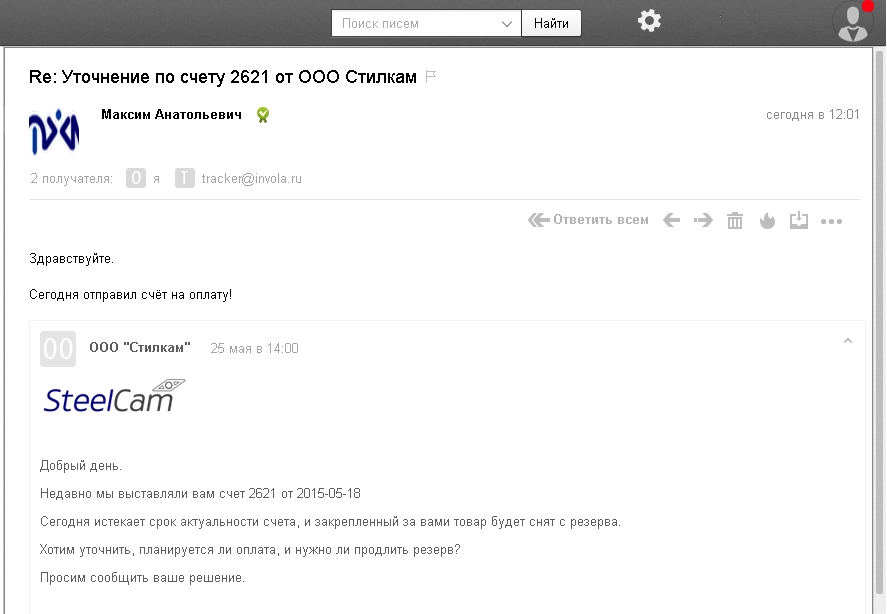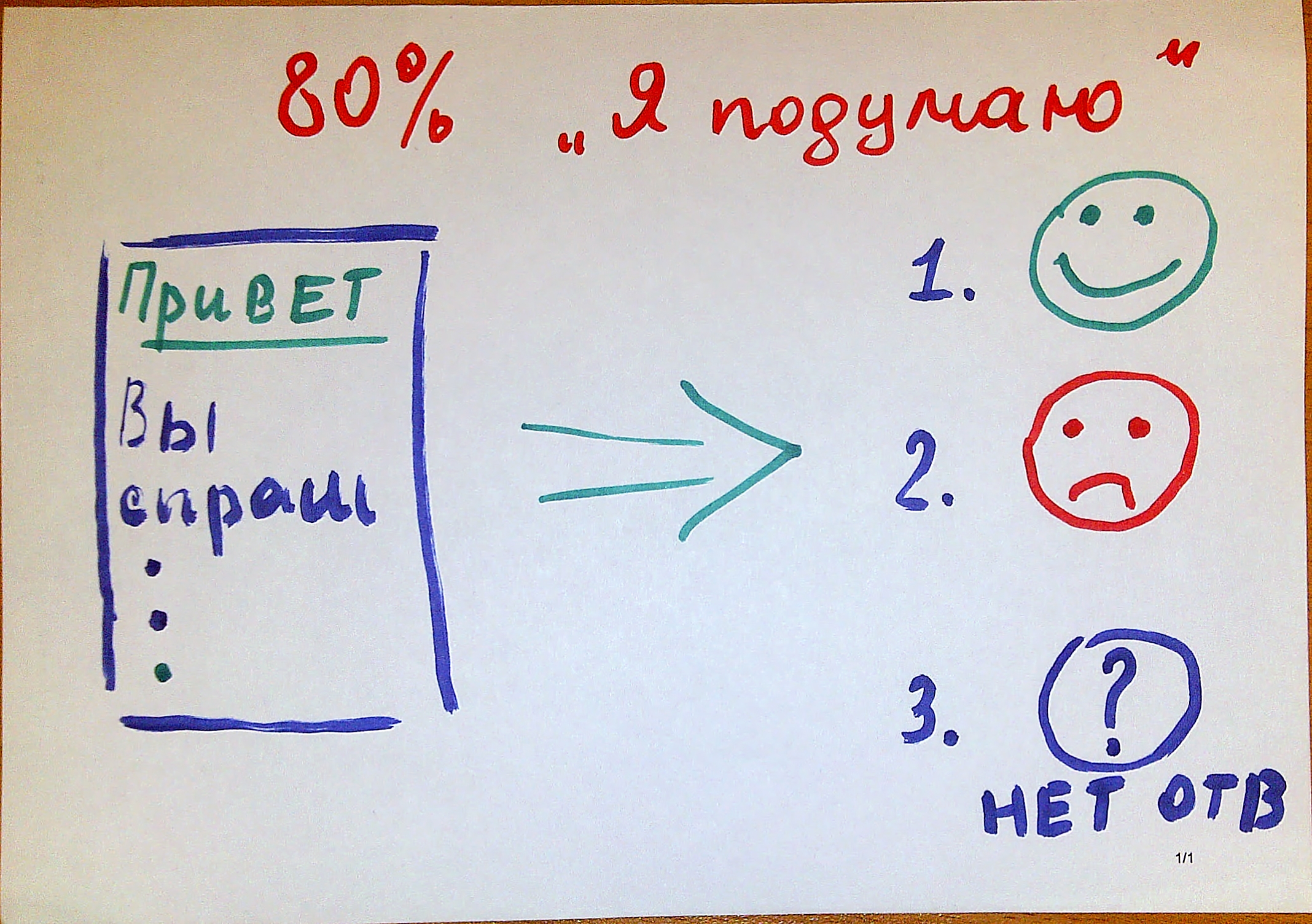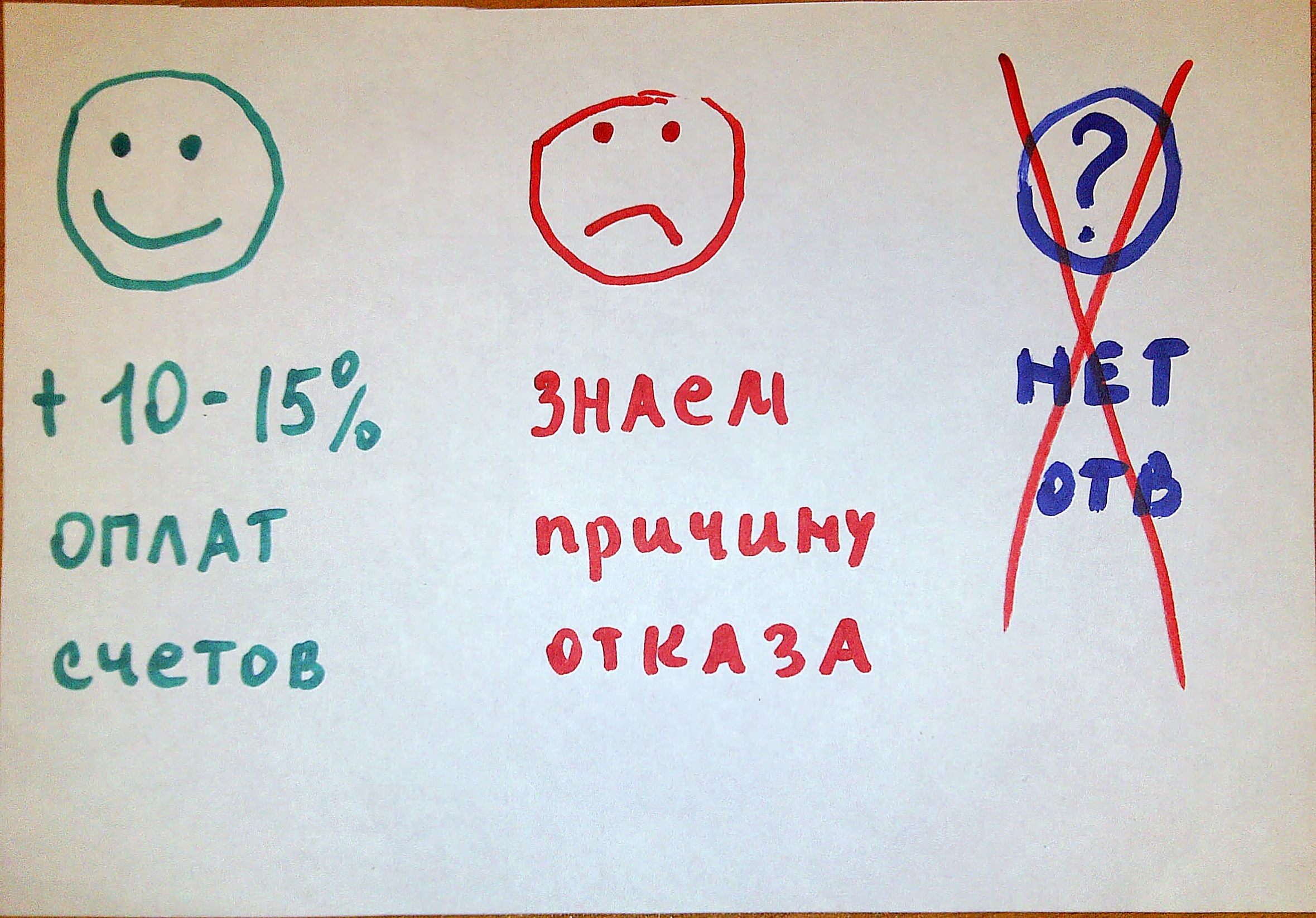How to increase sales efficiency in 30 minutes?
For any business, the effectiveness of the sales force, and the sales process itself, is critical.
And no wonder - there is no business without sales. No matter how good a product is, if you don’t know how to properly present it, the company’s success cannot be seen ...
Everyone has to sell - in industry, in tourism, and in car dealerships, and in wholesale ... Almost every field involves an active sales department.
')
When there is a question about the effectiveness of this department, the first thing you should pay attention to is how your method looks like (who answers the calls, how the customer’s needs are known, whether you ask “selling” questions, how long the offer is made, etc.)
And most importantly, how well the method performs the functions of prioritizing and staging the following steps: call, when promised, prepare a technical and commercial proposal really quickly - just follow the next step in time - and the efficiency will increase significantly.
And preferably quickly and without significant costs (especially if your company is developing and does not yet have billions of dollars in turnover).
The first thing that comes to mind with this situation is the introduction of the CPM system for customer relationship management. There are a lot of such systems on the market - cloud and desktop. Their main purpose is to standardize and automate the sales process.
Some of them are worth the fabulous money (such as SAP, Oracle, Sales-Force), designed to integrate with at least call centers, billing, large-scale telephony node. Their implementation is a serious challenge even for a very large business, not to mention a smaller company.
Others, such as Bitrix, Amo-CRM, Megaplan - have enough budget, and in some cases even free versions.
Many are beginning to introduce it with such products. And, often, they immediately encounter a bunch of managerial problems:
To set up a CPM system with integrated telephony, with automatic submission of applications from different channels (requests from the site, from mail, from calls to a common phone), with distribution of requests among managers, with automatic reminders for clients with one click - you have to spend time or money. Differently, depending on the region, somewhere it can cost from 20,000 rubles, from 50,000 rubles, from 200,000 rubles. And this, you see, already tangible costs. With all this, it’s not a fact that all the functionality you require will be implemented in the cloud-based CPM. For example, such a category as business processes can be flexibly configured only in the boxed version of the CPM - and this is at least +200 000 rubles of investments.
In general, when you start using an inexpensive CPM, you get an advanced diary, where you mark cases for each client. This is, of course, cool, but it doesn’t smell like automation, reduction of time for routine tasks. It’s not a fact that it will significantly increase the productivity of managers and, ultimately, sales.
Therefore, there are a large number of services in the automation market that perform a narrow task, do not require changes in the company's business processes, are inexpensive and bring quick and tangible results.
One of such services is the system of automatic notifications about invoices and commercial offers Invola.ru
This service is connected in automatic mode, Outlook is connected to the mail server (yandex.ru, mail.ru, and others.) For certain keywords it registers bills and offers that managers send to clients. After a certain time (1-3-5 days), if the invoice is not paid, the service offers to send a reminder to the client, thereby encouraging to take the next step.
For example, during the week you expose 100 invoices and commercial offers. Some of them are urgent requests and hot clients. As a rule, it is about 20% of all requests. They want the goods right now, and if you have a good offer - they buy. If not, they say that it doesn’t suit them for a certain reason (expensive, long delivery time, wrong color, etc ...) For these customers you will immediately receive feedback. And you can use it (make scripts of working with objections, offer a discount ...)

The remaining 80% are customers who consider different offers and compare. Most likely, they will not make a decision right away. They will rank your offer with competitors and will compare according to different criteria. This is especially true in the B2B sector when dealing with professional purchasers.
This segment goes into the category: "I will think"
In order for the transaction to take place, additional touches are required. Letters, calls, personal meetings. There are, of course, a small percentage of customers who call you again to clarify all the questions and complete the transaction. But, such as practice shows, not so much. In a highly competitive environment, there is a high probability that you will simply be forgotten.


Thus, using this system, we perform the functions of the following steps at once with one simple method (the system automatically reminds about the invoice and commercial offer) and the prioritization function.
Customers who simply forgot about us received additional attention and bought.
Those who are loyal to us, but have not bought for objective reasons, have given us reasons. Important management information.
And finally, we very easily identified a segment of random and disloyal customers. What to do with them is for everyone to decide. Someone will add to the mailing list, so that with a low probability of receiving applications in the future, someone will just forget, someone will add to the black list. But, in any case, you will save valuable time.

We do not say that the system replaces human labor. In any case, key customers need to call back in person, go to meetings, love and cherish.
But for the segment of all other requests, where the check is not so big - to leave the client without attention is still not worth it. Nor is it worth spending a lot of precious time.
With the help of the Invola system, you can give each client a little more care, remind yourself, stimulate a purchase, collect feedback and get management statistics about the intensity and efficiency of your work.
And no wonder - there is no business without sales. No matter how good a product is, if you don’t know how to properly present it, the company’s success cannot be seen ...
Everyone has to sell - in industry, in tourism, and in car dealerships, and in wholesale ... Almost every field involves an active sales department.
')
When there is a question about the effectiveness of this department, the first thing you should pay attention to is how your method looks like (who answers the calls, how the customer’s needs are known, whether you ask “selling” questions, how long the offer is made, etc.)
And most importantly, how well the method performs the functions of prioritizing and staging the following steps: call, when promised, prepare a technical and commercial proposal really quickly - just follow the next step in time - and the efficiency will increase significantly.
Another question: how to achieve this?
And preferably quickly and without significant costs (especially if your company is developing and does not yet have billions of dollars in turnover).
The first thing that comes to mind with this situation is the introduction of the CPM system for customer relationship management. There are a lot of such systems on the market - cloud and desktop. Their main purpose is to standardize and automate the sales process.
Some of them are worth the fabulous money (such as SAP, Oracle, Sales-Force), designed to integrate with at least call centers, billing, large-scale telephony node. Their implementation is a serious challenge even for a very large business, not to mention a smaller company.
Others, such as Bitrix, Amo-CRM, Megaplan - have enough budget, and in some cases even free versions.
Many are beginning to introduce it with such products. And, often, they immediately encounter a bunch of managerial problems:
- The number of "non-selling" functions for each manager increases. Indeed, maintaining information and filling out “cards” in the CPM is a longer process than when using entries in the diary or in the excel-plate.
- Information is duplicated. If managers led clients in a different way, translating information into the CPM system is a fairly voluminous job that will bring results “somewhere in perspective” but will not add money in a flowing situation. Phrases such as “I fill out half a day cards instead of selling” a manager will often hear from his managers.
- Automation with self-introduction is practically absent.
To set up a CPM system with integrated telephony, with automatic submission of applications from different channels (requests from the site, from mail, from calls to a common phone), with distribution of requests among managers, with automatic reminders for clients with one click - you have to spend time or money. Differently, depending on the region, somewhere it can cost from 20,000 rubles, from 50,000 rubles, from 200,000 rubles. And this, you see, already tangible costs. With all this, it’s not a fact that all the functionality you require will be implemented in the cloud-based CPM. For example, such a category as business processes can be flexibly configured only in the boxed version of the CPM - and this is at least +200 000 rubles of investments.
In general, when you start using an inexpensive CPM, you get an advanced diary, where you mark cases for each client. This is, of course, cool, but it doesn’t smell like automation, reduction of time for routine tasks. It’s not a fact that it will significantly increase the productivity of managers and, ultimately, sales.
Therefore, there are a large number of services in the automation market that perform a narrow task, do not require changes in the company's business processes, are inexpensive and bring quick and tangible results.
One of such services is the system of automatic notifications about invoices and commercial offers Invola.ru
This service is connected in automatic mode, Outlook is connected to the mail server (yandex.ru, mail.ru, and others.) For certain keywords it registers bills and offers that managers send to clients. After a certain time (1-3-5 days), if the invoice is not paid, the service offers to send a reminder to the client, thereby encouraging to take the next step.
What it looks like from a managerial point of view
For example, during the week you expose 100 invoices and commercial offers. Some of them are urgent requests and hot clients. As a rule, it is about 20% of all requests. They want the goods right now, and if you have a good offer - they buy. If not, they say that it doesn’t suit them for a certain reason (expensive, long delivery time, wrong color, etc ...) For these customers you will immediately receive feedback. And you can use it (make scripts of working with objections, offer a discount ...)

The remaining 80% are customers who consider different offers and compare. Most likely, they will not make a decision right away. They will rank your offer with competitors and will compare according to different criteria. This is especially true in the B2B sector when dealing with professional purchasers.
This segment goes into the category: "I will think"
In order for the transaction to take place, additional touches are required. Letters, calls, personal meetings. There are, of course, a small percentage of customers who call you again to clarify all the questions and complete the transaction. But, such as practice shows, not so much. In a highly competitive environment, there is a high probability that you will simply be forgotten.
What to do in this situation?
- Each request to bring in the CPM system, assign the case "Remind about the exposed KP" and manually call back to each client. The result will be. But another question is that it will take a lot of time, the language of managers will be on the shoulder, and one place in the soap ...
- The second option is to automatically, after the expiration of a certain time (say, if you have not been paid the bill within 3 days) to send a polite letter to the customer as follows

What happens then?
- If you spoke frankly and politely with the client, gave him valuable information, but your proposal objectively turned out to be worse than the competitors, then most likely the client will calmly react to such a letter, remember you, and indicate the reason for the refusal - why he did not buy it from you. As you understand, this is very important information and a very good “lead.” He treats you very loyally, and, quite possibly, next time he will turn to you again.
- It is very likely that you and your managers worked well, but the client got excited and just forgot about you. In this case, having received such a reminder, the client will remember about you, call you, and, most likely, complete the transaction. When we worked in the sale of metal-cutting tools, there were about 10-20%. They immediately raised our sales.
- And, of course, there will remain a segment of “random and disloyal buyers” who simply monitored the market. We, for example, had purchasers who simply collected proposals for their competitive lists in order to report to management. “They had their own supplier”, and they did this work “for a tick”
Such requests, as you understand, only take time away from you and your managers.

What do we get at the output?
Thus, using this system, we perform the functions of the following steps at once with one simple method (the system automatically reminds about the invoice and commercial offer) and the prioritization function.
Customers who simply forgot about us received additional attention and bought.
Those who are loyal to us, but have not bought for objective reasons, have given us reasons. Important management information.
And finally, we very easily identified a segment of random and disloyal customers. What to do with them is for everyone to decide. Someone will add to the mailing list, so that with a low probability of receiving applications in the future, someone will just forget, someone will add to the black list. But, in any case, you will save valuable time.

We do not say that the system replaces human labor. In any case, key customers need to call back in person, go to meetings, love and cherish.
But for the segment of all other requests, where the check is not so big - to leave the client without attention is still not worth it. Nor is it worth spending a lot of precious time.
With the help of the Invola system, you can give each client a little more care, remind yourself, stimulate a purchase, collect feedback and get management statistics about the intensity and efficiency of your work.
Source: https://habr.com/ru/post/292080/
All Articles